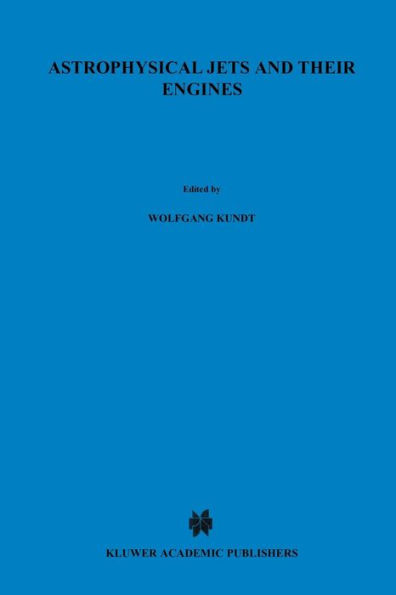Astrophysical Jets and Their Engines
This volume is the documentation of the first Course on 'Neutron Stars, Active Galactic Nuclei and Jets', of an Erice School with a wide astro physical scope. The choice of the subject was made because of an apparent similari ty - stressed already at earlier meetings - of four classes of astrophy sical jet sources: Active Galactic Nuclei, Young Stellar Objects, Binary Neutron Stars and Binary White Dwarfs. They share important properties such as their morphology, high variability and large veloci ty gradients as well as - with some inference - their broad spectrum, hypersonic outflow and core/lobe power ratio. Despite this apparent similarity of the four source classes, quite different models have been put forward for their description: (i) The central engine of active galactic nuclei has been generally thought to be a black hole, in contrast to the central engine of young stellar objects and cometary nebulae which apparently is a pre-T-Tauri star, some six orders of magnitude less compact, and to the central engine of planetary nebulae which mayor may not be a binary white dwarf. (ii) The elongated lobes, or flow patterns, have been often interpreted as highly directional stellar wind outflows whereas in a few well mapped cases, the elongated flow appears to be 'pumped up' through a much narrower channel, or jet, both in the extragalactic and stellar sources.
1117013093
Astrophysical Jets and Their Engines
This volume is the documentation of the first Course on 'Neutron Stars, Active Galactic Nuclei and Jets', of an Erice School with a wide astro physical scope. The choice of the subject was made because of an apparent similari ty - stressed already at earlier meetings - of four classes of astrophy sical jet sources: Active Galactic Nuclei, Young Stellar Objects, Binary Neutron Stars and Binary White Dwarfs. They share important properties such as their morphology, high variability and large veloci ty gradients as well as - with some inference - their broad spectrum, hypersonic outflow and core/lobe power ratio. Despite this apparent similarity of the four source classes, quite different models have been put forward for their description: (i) The central engine of active galactic nuclei has been generally thought to be a black hole, in contrast to the central engine of young stellar objects and cometary nebulae which apparently is a pre-T-Tauri star, some six orders of magnitude less compact, and to the central engine of planetary nebulae which mayor may not be a binary white dwarf. (ii) The elongated lobes, or flow patterns, have been often interpreted as highly directional stellar wind outflows whereas in a few well mapped cases, the elongated flow appears to be 'pumped up' through a much narrower channel, or jet, both in the extragalactic and stellar sources.
169.99
In Stock
5
1

Astrophysical Jets and Their Engines
256
Astrophysical Jets and Their Engines
256Paperback(Softcover reprint of the original 1st ed. 1987)
$169.99
169.99
In Stock

Product Details
| ISBN-13: | 9789401082426 |
|---|---|
| Publisher: | Springer Netherlands |
| Publication date: | 10/01/2011 |
| Series: | Nato Science Series C: , #208 |
| Edition description: | Softcover reprint of the original 1st ed. 1987 |
| Pages: | 256 |
| Product dimensions: | 6.30(w) x 9.45(h) x 0.02(d) |
From the B&N Reads Blog
